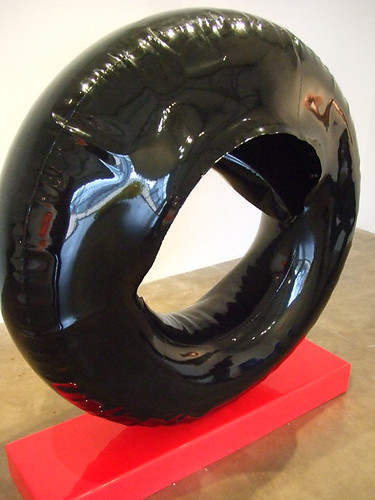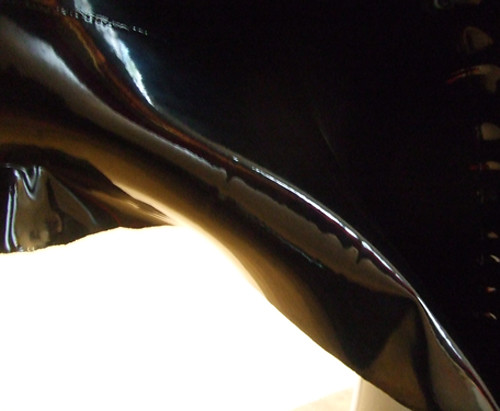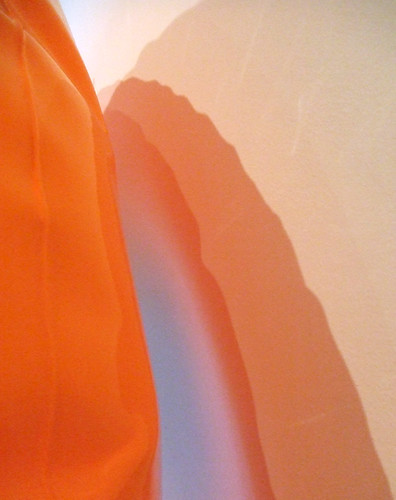
William Cannings‘s solo show for the 2009 Texas Biennial, on view at
Okay Mountain, might be a formalist‘s wet dream. Of course, I am aware
that these gorgeous metal forms are somehow cast from actual objects and that there’s no essential shape here. While this might be a deal-breaker for
the more fundamentalist minimalists, but a big boon for us reformed,
more flexible ones. Listen, I’m aware that the work is not a revelation
to anyone, that it’s not going to change the universe or anything. But
as with most of the Biennial shows I’ve seen (I’m about 3/4 done), the
point seems to be that just because something isn’t new or revelatory
doesn’t mean it’s not great art. It’s a pretty good lesson for Texas
(cf Bill Davenport’s lambasting of Texas provincialism ).
Okay Mountain, might be a formalist‘s wet dream. Of course, I am aware
that these gorgeous metal forms are somehow cast from actual objects and that there’s no essential shape here. While this might be a deal-breaker for
the more fundamentalist minimalists, but a big boon for us reformed,
more flexible ones. Listen, I’m aware that the work is not a revelation
to anyone, that it’s not going to change the universe or anything. But
as with most of the Biennial shows I’ve seen (I’m about 3/4 done), the
point seems to be that just because something isn’t new or revelatory
doesn’t mean it’s not great art. It’s a pretty good lesson for Texas
(cf Bill Davenport’s lambasting of Texas provincialism ).

The
obvious reference point for Cannings’s work is Jeff Koons, who has used
at different points in his practice both inflatables and cast metal
sculptures of balloon animals . However, the work isn’t so much
derivative of Koons as it is a derivation of it: while Koons
seems to choose balloon animals for their kitsch factor, Cannings’s
inflated forms feel more like a reference to a previous group of artists who
were more interested in the purity of shape and material than the
relative Pop appeal of things. Cannings’s shapes remind me of
bastardized Donald Judd and Richard Serra shapes; the inflatable cubes
to the former and the burst tires to the latter’s torqued metal.
obvious reference point for Cannings’s work is Jeff Koons, who has used
at different points in his practice both inflatables and cast metal
sculptures of balloon animals . However, the work isn’t so much
derivative of Koons as it is a derivation of it: while Koons
seems to choose balloon animals for their kitsch factor, Cannings’s
inflated forms feel more like a reference to a previous group of artists who
were more interested in the purity of shape and material than the
relative Pop appeal of things. Cannings’s shapes remind me of
bastardized Donald Judd and Richard Serra shapes; the inflatable cubes
to the former and the burst tires to the latter’s torqued metal.

The
allure of these pieces then stems from the ways in which Cannings
recontextualizes the reference points by rejecting repetition and
painting his forms in gorgeous shining hot-rod colors. These
alterations yield highly seductive explorations of the material quality
of metals and paints. It’s all surface considerations, empty of meaning
beyond the seductive way that the paint refracts, bends, reflects light
and the way thin metal skin can look simultaneously soft, pliable and
light while retaining its weight, hardness and presence.
allure of these pieces then stems from the ways in which Cannings
recontextualizes the reference points by rejecting repetition and
painting his forms in gorgeous shining hot-rod colors. These
alterations yield highly seductive explorations of the material quality
of metals and paints. It’s all surface considerations, empty of meaning
beyond the seductive way that the paint refracts, bends, reflects light
and the way thin metal skin can look simultaneously soft, pliable and
light while retaining its weight, hardness and presence.

And yet, these
objects still manage to make us aware of the space they inhabit. It was
a great decision to have this solo show at Okay Mountain, arguably the
gallery with the best natural light out of the 4 venues. Cannings’s
sculptures appear to glow and extend beyond their physical borders,
reflecting varying gradations of color onto the walls and floor and
creating a real awareness of the space they inhabit, what they call
"activating the space."
objects still manage to make us aware of the space they inhabit. It was
a great decision to have this solo show at Okay Mountain, arguably the
gallery with the best natural light out of the 4 venues. Cannings’s
sculptures appear to glow and extend beyond their physical borders,
reflecting varying gradations of color onto the walls and floor and
creating a real awareness of the space they inhabit, what they call
"activating the space."



